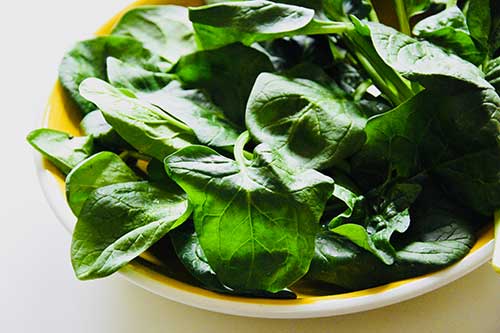Natural Toxins In The Vegetables We Eat

Did you know that raw spinach and potato could be harmful to your health?
Although highly nutritious, some types of vegetables contain anti-nutritive compounds that can reduce the absorption of other nutrients, thus becoming the subject of ongoing debates and health concerns.
Spinach, for instance, contains oxalic acid, a compound classified as an anti-nutrient. The oxalic acid binds with calcium, magnesium, iron, zinc, and copper in our intestines to form insoluble salts (oxalates).
The term insoluble means that substances cannot dissolve, i.e. do not mix with other substances to form a new compound. Furthermore, oxalate crystals in raw spinach are not absorbed but instead are carried out with the feces and the bound minerals. This reduces the bioavailability and absorption of these minerals (for example, the amount of calcium in one cup of yogurt equals more than 16 cups of raw spinach).
On the other hand, oxalic acid that remains in its soluble form (like free acid or as potassium, sodium, or zinc salts) gets absorbed from our digestive system. Mixed with other substances (such as calcium) it forms salts, and further in its way – at a higher concentration – can form crystals.
These tiny salt crystals can irritate human tissue or worsen the symptoms of gout, a type of arthritis caused by mineral crystals forming in the joints.
Additionally, human urine regularly contains small levels of calcium oxalate that may be deposited in the kidneys as a common form of kidney stones. A low oxalate diet is therefore the dietary norm for people with decreased kidney function and/or chronic renal disease.
How can we reduce oxalates in vegetables?
The best way to reduce oxalates (to 1/3) in spinach is by cooking or lightly steaming it, thus allowing the body to exert some of its nutritional benefits.
Another way is to combine spinach with high calcium foods such as dairy products (calcium will bind to a soluble form and make it insoluble while in the intestines). There are plenty of delicious recipes on how to prepare spinach with milk.
Raw Potato Bacteria
Raw potatoes can absorb some of the bacteria found in water or soil while growing (Listeria, Salmonella, and Escherichia coli). The good thing is that these can be easily destroyed simply by cooking. Half-cooked or raw potatoes may cause some serious issues such as abdominal cramps, diarrhea, fever, and many other stomach problems.
Furthermore, raw potatoes and other nightshade vegetables may contain two other toxic chemicals – solanine and chaonine, steroidal glycoalkaloids that are naturally present in small amounts (a safe level is up to 20 mg/100g) and have insecticidal and antifungal properties. However, when consumed in higher amounts, they can be toxic to humans.
Concentrations in unripe or germinated tubers can rise to the amount of 1200 mg/kg. Potatoes with solanine concentrations of 100 mg/kg can cause prickling when taken or taste bitter with 200 mg/kg.
How do potatoes get contaminated?
When subjected to heat, mechanical damage, improper storage, or cultivation, the amount of toxins in potatoes gradually increases. The visible, green spots on the surface skin or within the flesh are the result of chlorophyll accumulation due to sunlight exposure (in the field or during storage).
Solanine is a cholinesterase inhibitor. This means that solanine prevents enzyme cholinesterase to breakdown a neurotransmitter called acetylcholine in the body. This results in an accumulation of acetylcholine in high levels in the areas where nerve endings interact with muscles, disabling the nervous system from functioning properly and, in turn, causing cell death.
Signs And Symptoms Of Poisoning
The symptoms of low-grade potato poisoning that may appear 30 minutes after eating the toxic potato and include diarrhea, vomiting, dizziness, and severe stomach cramps. The symptoms of severe poisoning have a longer incubation period and are characterized mostly by neurological symptoms such as drowsiness, confusion, fever, and loss of sensation, apathy, dilated pupils, and impaired vision.
There have been reports of unconsciousness and even death. A few studies performed on experimental animals have shown teratogenicity and embryotoxicity of these glycoalkaloids (congenital spina bifida).
Solanine is a very stable substance and any form of cooking does not reduce the amount of these toxins in potatoes once the levels are increased. By peeling potatoes, you remove only up to 30% of these toxins.
Therefore, by consuming only fresh potatoes and carefully looking for any signs of rooting (green and brown spots randomly scattered on the tuber surface), we reduce the risk of getting poisoned.
Store the vegetable in a cool and dry place, away from direct sunlight, and most importantly – do not eat bitter-tasting or half-cooked potatoes.
___________________________________________





